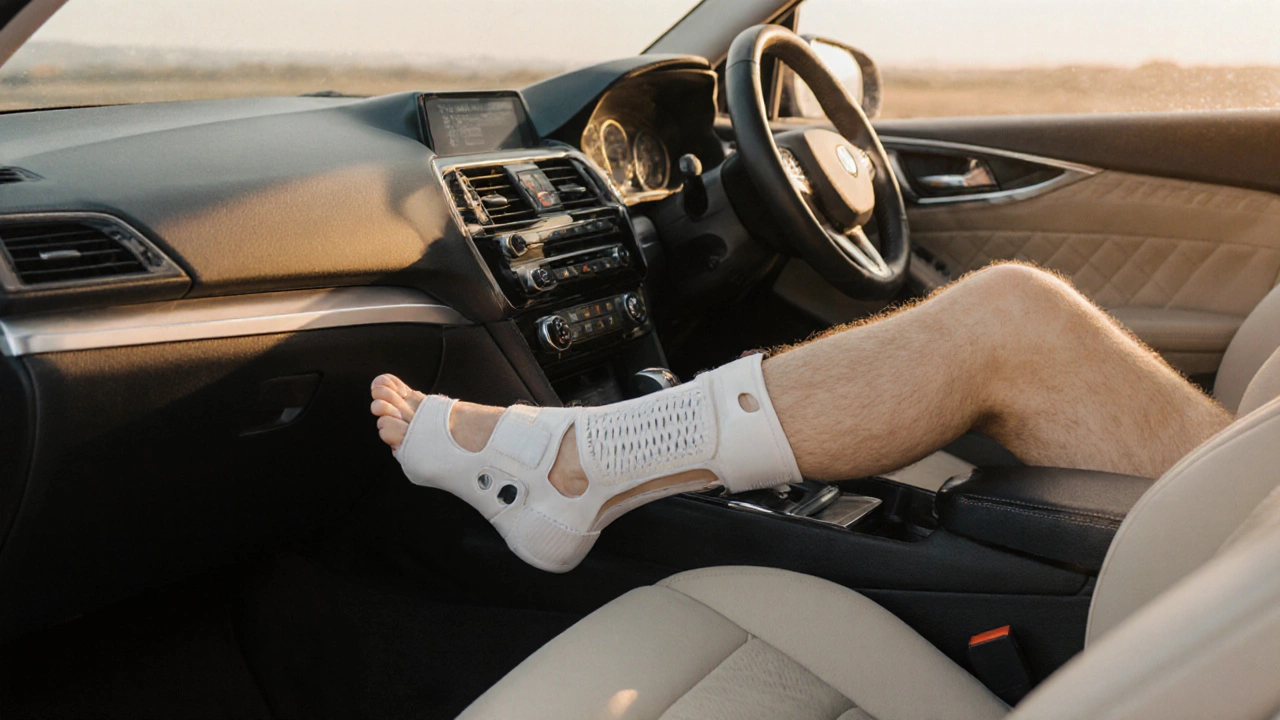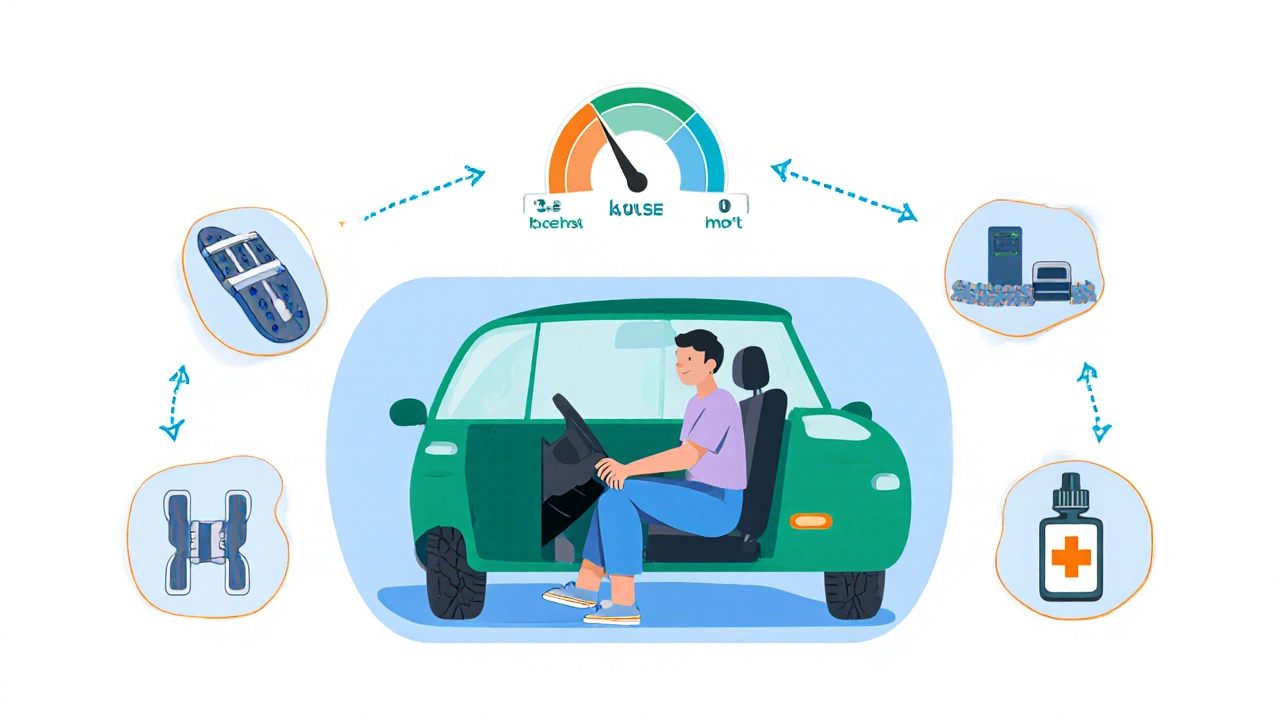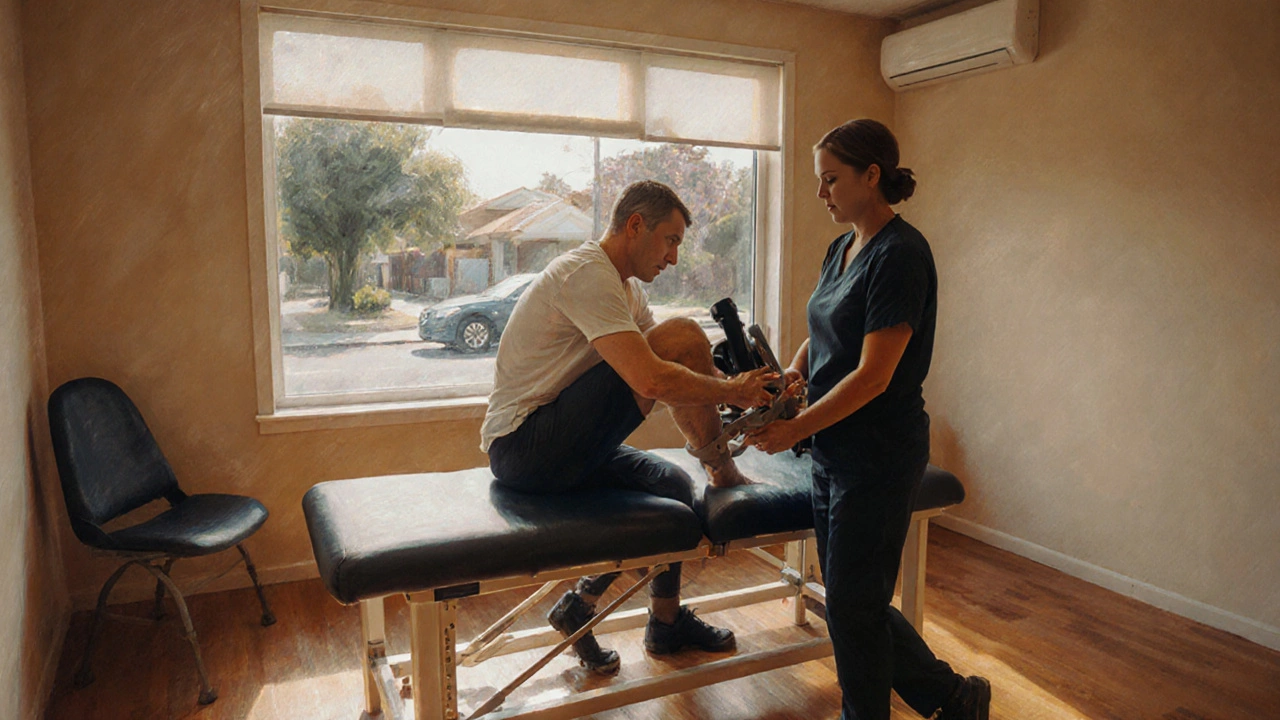Driving After Knee Surgery: Is 2 Weeks Safe?
 Oct, 9 2025
Oct, 9 2025
Knee Surgery Driving Safety Checker
Complete the assessment above to see your personalized safety recommendation.
Key Takeaways
- Most simple knee arthroscopies may permit driving after 1‑2 weeks, but strength and pain are the deciding factors.
- UK law requires you to be medically fit to control a vehicle; a surgeon’s written note is often needed for insurance.
- Use a quick self‑assessment: brake response, pedal reach, pain level, and brace comfort.
- If you feel any hesitation, wait longer, arrange alternative transport, and focus on physiotherapy.
- Different procedures have different timelines - total knee replacement usually needs 4‑6 weeks before safe driving.
When you ask yourself whether you can drive after knee surgery, the answer isn’t a simple yes or no. It hinges on the type of operation you had, how quickly you regain leg strength, how well you manage pain, and what the UK legal requirements are. Below you’ll find a step‑by‑step plan to help you decide if two weeks is enough for you.
What Types of Knee Surgery Look Like
Not all knee surgeries are created equal. Here’s a quick snapshot of the most common procedures and their typical recovery windows:
| Procedure | Typical In‑Hospital Stay | Minimum Driving Time* |
|---|---|---|
| Arthroscopic Meniscectomy | Same day | 7‑10 days |
| Arthroscopic ACL Repair | 1 night | 10‑14 days |
| Partial Knee Replacement | 1‑2 nights | 3‑4 weeks |
| Total Knee Replacement | 2‑3 nights | 4‑6 weeks |
*Times assume you meet the self‑assessment criteria listed later.
Legal Landscape in the United Kingdom
In the UK, the law doesn’t prescribe a fixed number of days after surgery before you can drive. Instead, the driver must be "medically fit" - meaning you can safely control the vehicle, react quickly, and have full use of both feet. The DVLA (Driver and Vehicle Licensing Agency) expects you to report any condition that could impair driving, and many insurers will ask for a doctor's note confirming fitness.
If your surgeon writes you a clearance that states you have regained sufficient range of motion and strength, you’re usually good to go. Without that note, you risk an insurance claim being denied if you’re involved in an accident.

Quick Self‑Assessment: Am I Ready to Drive?
Before you even think about getting behind the wheel, run through this simple checklist. You only need a few minutes and a safe space to test your abilities.
- Brake Reaction Test: Sit in your car, keep your foot on the accelerator, and press the brake as if you need to stop suddenly. You should be able to move the pedal fully without pain and stop the car within a normal distance.
- Pedal Reach: With the seat adjusted to your usual driving position, make sure you can press both the accelerator and brake comfortably without stretching or feeling pressure on the surgical knee.
- Pain Level: Rate any pain or discomfort on a scale of 0‑10 while performing the above tests. Anything above a 3 suggests you need more time.
- Brace or Splint Comfort: If you’re wearing a knee brace, verify it does not impede pedal movement or cause numbness.
- Medication Effects: Some pain medication can cause drowsiness. Make sure you’re fully alert and not under the influence of opioids or strong sedatives.
If you tick all boxes, you’re likely cleared to drive. If any item fails, give yourself more time or consult your physiotherapist.
Preparing for Your First Post‑Surgery Drive
Even when you pass the self‑assessment, a few practical steps can make the experience smoother.
- Adjust Your Seat: Move the seat forward slightly to reduce stretch on the healing knee. Use lumbar support if you need extra comfort.
- Practice in a Safe Area: Start in a quiet car park or empty street. Perform a few brake‑and‑accelerate drills to confirm consistency.
- Limit Early Trips: Keep initial journeys under 15 minutes and avoid heavy traffic. This reduces stress on the joint and on you.
- Stay Hydrated and Take Breaks: Dehydration can amplify pain perception. Take a short break every 20‑30 minutes on longer trips.
- Keep Emergency Numbers Handy: In case you feel sudden swelling or instability, you’ll want professional help quickly.
When to Hold Off Longer Than Two Weeks
Even if the checklist looks good, certain situations call for extra caution.
- Complex Surgeries: Total knee replacements or revisions often need 4‑6 weeks because the quadriceps muscle takes longer to regain strength.
- Post‑Operative Complications: Swelling, infection, or a stiff joint can delay safe driving indefinitely.
- Medication Dependence: If you’re still on opioid painkillers, the risk of delayed reaction times outweighs any convenience.
- Age and Baseline Fitness: Older adults or those who were less active before surgery may need additional physiotherapy before feeling confident.
In any of these cases, arrange alternate transport-public transport, rideshares, or a friend’s help-while you continue rehab.

Physical Therapy’s Role in Getting You Back on the Road
Rebuilding leg strength is the cornerstone of a safe return to driving. Typical PT goals for the first two weeks include:
- Achieving at least 70% of pre‑surgery knee flexion (around 110 degrees).
- Performing straight‑leg raises without pain.
- Walking 30‑40 minutes with minimal limp.
- Practicing controlled braking on a stationary bike or treadmill.
Once you consistently meet these milestones, most physiotherapists will give you the green light to drive.
What to Do If You’re Unsure
When doubt creeps in, the safest move is to get a written clearance from your surgeon or physiotherapist. Bring the clearance to your insurance provider to avoid claim disputes.
If the professional advises more time, use the extra weeks to focus on strengthening and flexibility exercises. Every extra day you spend healing reduces the chance of a crash later.
Frequently Asked Questions
Can I drive if I’m still using a crutch?
No. A crutch means you’re still relying on your hands for balance, which compromises your ability to react quickly with the pedals. Wait until you can walk unaided.
Do I need a note from my doctor to drive in the UK?
You don’t need a formal note for the DVLA, but insurance companies often ask for proof of fitness. A short letter stating you have regained sufficient range of motion and strength is usually enough.
Will wearing a knee brace affect my driving?
A well‑fitted brace should not hinder pedal movement. Test the brake and accelerator with the brace on before you head out. If you feel any restriction, adjust the brace or wait longer.
How long should I wait after a total knee replacement?
Most orthopaedic surgeons recommend 4‑6 weeks before attempting to drive, provided you pass the self‑assessment and have no pain or swelling.
Is it safe to drive with mild pain medication?
If the medication is non‑sedating (e.g., paracetamol or NSAIDs) and you feel fully alert, driving is generally safe. Opioids that cause drowsiness or slowed reaction times should be avoided while behind the wheel.